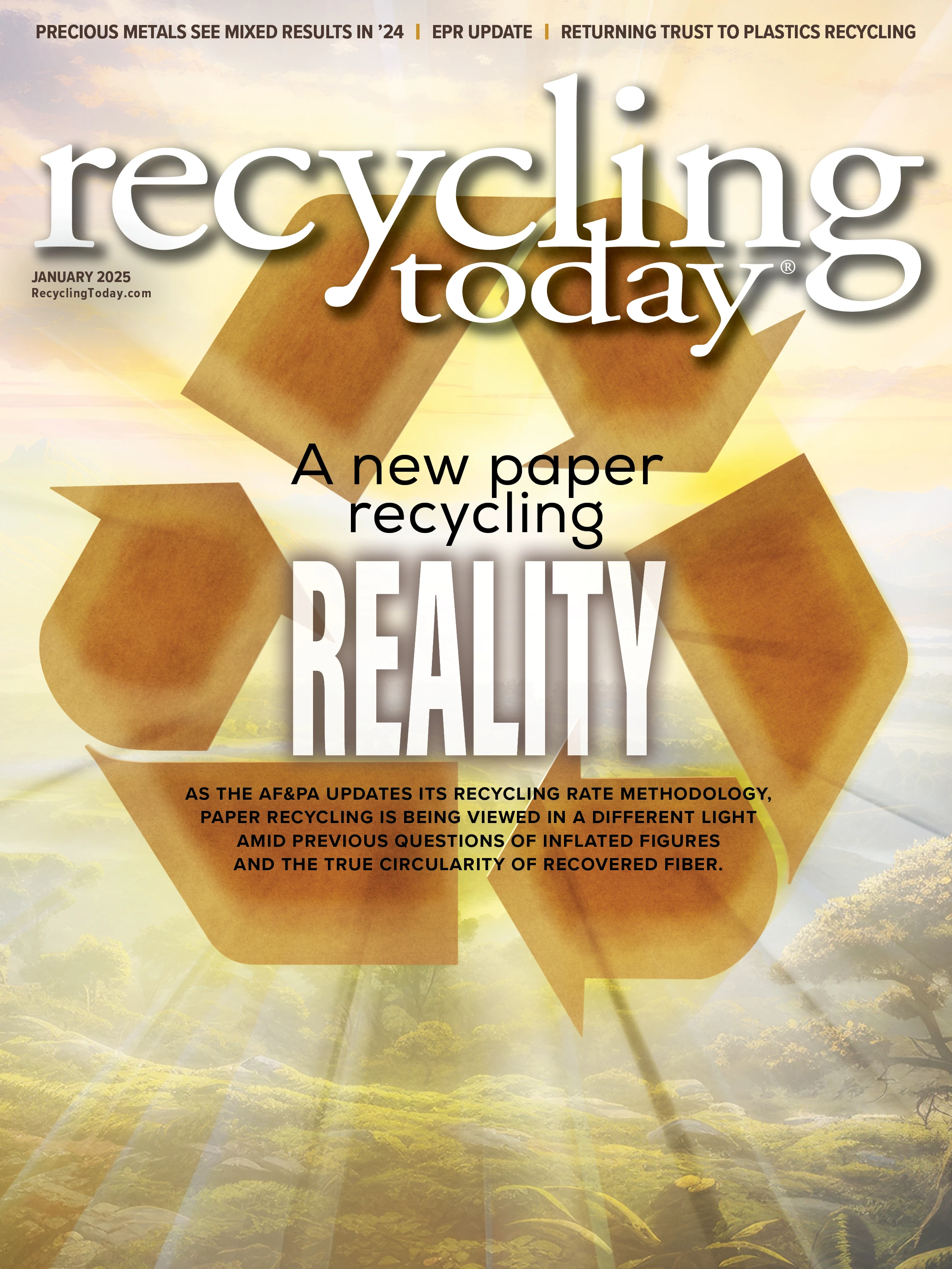Despite some major brands announcing they’d fall short of 2025 recycled-content goals, industry organizations helped close 2024 on an optimistic note while urging legislators to support recycling efforts.
In mid-December, the Middleton, Wisconsin-based National Association for PET Container Resources (NAPCOR) released its “2023 PET Recycling Report,” noting record highs in the U.S. in key categories
NAPCOR reported a U.S. polyethylene terephthalate (PET) bottle collection rate of 33 percent in 2023, up from 29 percent in 2022 and the highest recycling rate in the country since 1996. Also, the average amount of recycled PET, or rPET, used in U.S. bottles and jars reached a record-high of 16.2 percent, up from 13.2 percent in 2022. The 1.96 billion pounds of PET bottles collected for recycling also are a record high, up from 1.91 billion pounds in 2022.
“We cannot manage what we do not measure. Businesses and governments need clear, consistent data and cohesive policies to guide investment and innovation. Federal leadership is essential to achieving a circular economy for plastics.” – Jonathan Quinn, U.S. Plastics Pact
According to NAPCOR, the number of PET bottles collected grew while fewer bottles were available for recycling compared with 2022. The organization says the increase in rPET content in bottles likely is because of brand commitments and recycled-content legislation.
“NAPCOR’s ‘2023 PET Recycling Report’ underscores the ever-growing demand for PCR [postconsumer recycled] content,” Executive Director Laura Stewart says. “To meet this demand, NAPCOR and the PET industry are eager to work with the government and other stakeholders to improve the collection and recycling of PET plastic.”
Diving into 2024 recycling trends, London-based technology company Greyparrot, which has deployed 140 Analyzer units that use artificial intelligence to track material streams at recycling facilities globally, says its machines detected more than 6 billion PET bottles—the highest number of any material category—entering facilities and being processed while also not being represented among the top three categories of material in residue.

In its “2023-2024 Impact Report,” the Pittsburgh-based U.S. Plastics Pact says its 135 members made “significant strides” in packaging design.
It reports that sustainable packaging adoption by its members reached 50 percent as of November 2024, an increase from 36 percent in 2021. Pact members also raised recycled content use in their packaging to 11 percent.
The Pact calls for cohesive national policies, including standardized recycling definitions, extended producer responsibility programs and updated recycling data, and urges federal legislators to help scale the infrastructure necessary to hit recycling targets.
“We cannot manage what we do not measure,” Pact CEO Jonathan Quinn says. “Businesses and governments need clear, consistent data and cohesive policies to guide investment and innovation. Federal leadership is essential to achieving a circular economy for plastics.”

Explore the January 2025 Issue
Check out more from this issue and find your next story to read.
Latest from Recycling Today
- Phoenix Technologies closes Ohio rPET facility
- EPA selects 2 governments in Pennsylvania to receive recycling, waste grants
- NWRA Florida Chapter announces 2025 Legislative Champion Awards
- Goldman Sachs Research: Copper prices to decline in 2026
- Tomra opens London RVM showroom
- Ball Corp. makes European investment
- Harbor Logistics adds business development executive
- Emerald Packaging replaces more than 1M pounds of virgin plastic





